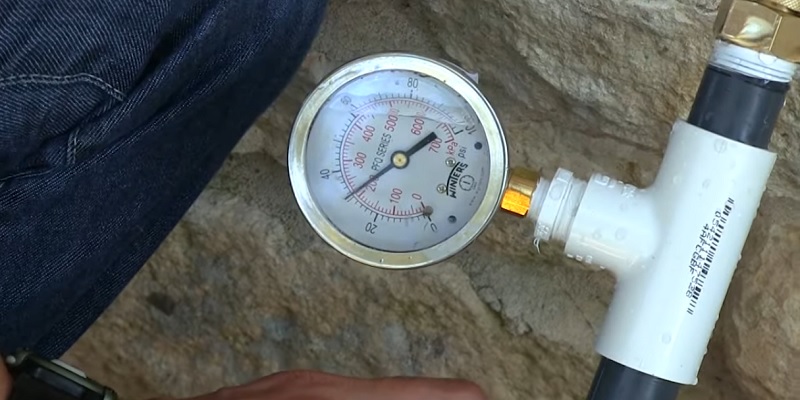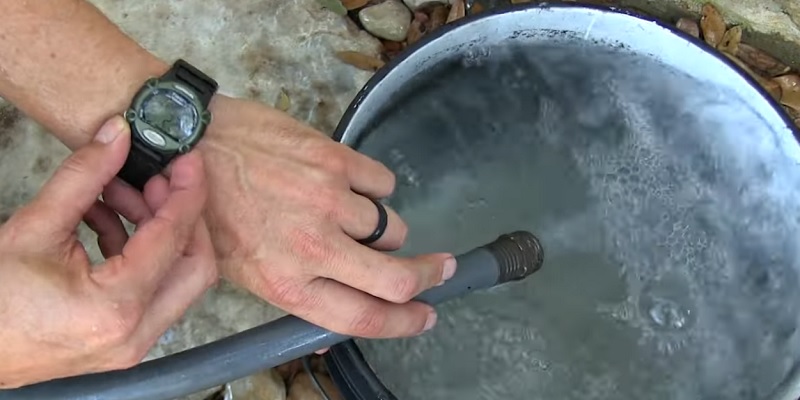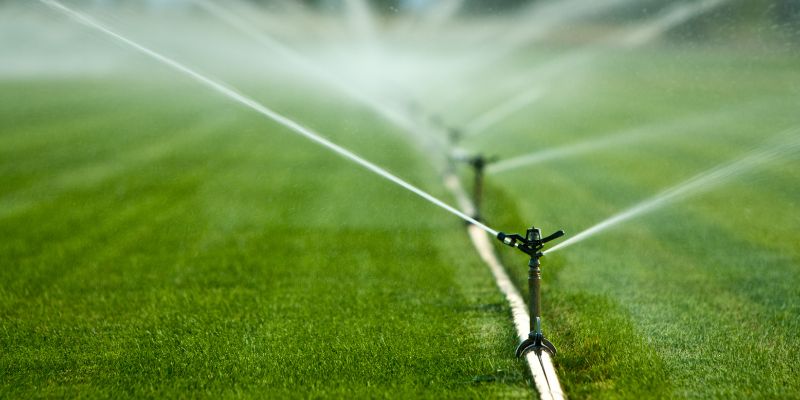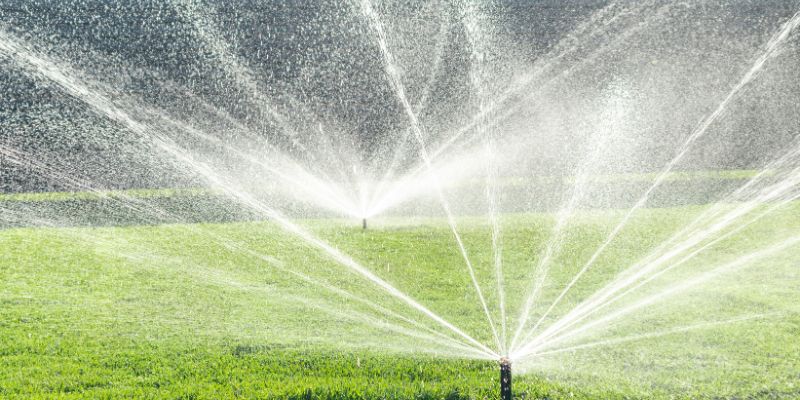Setting up your lawn sprinkler system the right way is key to keeping your grass green and healthy. One of the most important parts of this setup is planning your sprinkler zones. This planning helps make sure every part of your lawn gets the water it needs, without wasting any.
There are several things that affect how many sprinkler heads you can put in each zone. These include how strong your water pressure is, how much water flows through your pipes, what kind of sprinkler heads you’re using, and the size and shape of your yard. Understanding these factors will help you create a sprinkler system that works well for your specific lawn.
As a general guideline, expect 4-6 rotary heads, 3-5 impact sprinklers, 8-15 spray heads, 20-40 drip emitters, or 10-15 bubblers per zone.
To determine specific requirements, calculate your system’s flow rate and consider factors like water pressure and landscape needs.
Want to make planning easier? Try our free sprinkler zone calculator! It can help you figure out how many heads to put in each zone based on your lawn’s needs.

Understanding Sprinkler Zones
A sprinkler zone is a group of sprinkler heads that turn on and off together. These heads are all connected to the same valve, which controls when water flows to them. Zones are a smart way to divide up your yard for watering.
Zoning your sprinkler system has several benefits. It lets you water different parts of your yard separately, which is helpful because some areas might need more water than others. For example, a sunny spot might need more water than a shaded area. Zones also help you control your water pressure. If you tried to run all your sprinklers at once, you might not have enough water pressure to make them work well. By using zones, you can make sure each sprinkler has the pressure it needs to cover its area properly.
What Affects the Number of Sprinkler Heads Per Zone?
Several key factors determine how many sprinkler heads you can effectively use in a single zone. Understanding these elements is crucial for designing an efficient irrigation system that provides adequate coverage without wasting water. Let’s explore each factor in detail:
Water Pressure (PSI)
Water pressure is a critical factor in determining the number of sprinkler heads per zone. It refers to the force that pushes water through your irrigation system. Higher pressure generally allows for more sprinkler heads because each head can operate more effectively. Low pressure (below 30 PSI) might limit you to 2-4 heads per zone, while high pressure (60 PSI and above) could support 8 or more heads. Optimal pressure for most residential systems is between 30-50 PSI.

Too high pressure can damage equipment and cause misting, reducing watering efficiency. Too low pressure results in poor spray distance and coverage. To measure your water pressure, use a pressure gauge attached to an outdoor faucet. Take readings at different times of day, as pressure can fluctuate. If pressure is consistently above 80 PSI, consider installing a pressure regulator to protect your system.
Water Flow Rate (GPM)

Flow rate is the volume of water your system can deliver in a given time. It’s equally important as pressure in determining sprinkler head count. Your available GPM limits the total water output of all heads in a zone. Exceeding the available flow rate leads to poor performance across all active heads. Typical residential systems have flow rates between 8-20 GPM. To calculate your flow rate, time how long it takes to fill a 5-gallon bucket from your main outdoor faucet. Use this formula: GPM = 300 / number of seconds to fill the bucket. For accuracy, perform this test 3 times and take the average.
Sprinkler Head Type
Different sprinkler heads have varying water requirements and coverage areas. Spray heads use 1-5 GPM and cover 5-15 feet radius, making them good for small areas. Rotor heads use 3-15 GPM and cover 15-50 feet radius, efficient for large lawns. Impact sprinklers use 2-20 GPM and cover up to 100 feet radius, suitable for very large areas. Drip irrigation uses less than 1 GPM and targets individual plants, highly efficient for gardens.
Bubblers use moderate amounts of water, typically 0.5-2 GPM. They emit a fountain-like stream of water that floods a small area around the head. Bubblers are excellent for watering shrubs, trees, and other individual plants. Choose head types based on your landscape needs and water availability. Mixing head types within a zone can lead to uneven watering.
Yard Size and Shape
The characteristics of your yard significantly influence sprinkler head count and placement. Large, open areas may require fewer, high-volume heads (like rotors). Small or irregularly shaped areas often need more low-volume heads (like spray heads) for proper coverage. Long, narrow areas might require a series of heads with adjusted arc patterns. Consider creating separate zones for areas with significantly different sizes or shapes.
Soil Type
Soil composition affects water absorption and retention, influencing how you set up your sprinkler zones. Sandy soils drain quickly and may require more frequent watering with more heads to ensure even coverage. Clay soils retain water longer but absorb it slowly. Fewer heads might be needed, but run times may need to be adjusted to prevent runoff.
Loamy soils are ideal for water retention and absorption, allowing for more flexible sprinkler setup. Adjust your sprinkler system based on soil type. For sandy soils, consider using heads with lower flow rates but increased frequency. For clay soils, use heads with lower precipitation rates to allow time for water absorption.
Plants and Landscaping
Different plants have varying water needs, affecting how you design your sprinkler zones. Lawns generally require uniform watering, so use consistent head types across the zone. Gardens may need more targeted watering, so consider drip irrigation or adjustable spray heads.
Trees and shrubs often require deep, infrequent watering, so use bubblers or drip systems. Native plants usually require less water, so design zones to provide minimal supplemental watering. Create separate zones for areas with distinctly different plant types to allow for customized watering schedules.
By carefully considering these factors, you can design an irrigation system that efficiently waters your landscape while conserving water and promoting plant health. Remember, an effective system balances these elements to provide adequate coverage without overwatering or wasting resources.
Other Important Considerations
When designing your sprinkler system, several additional factors can significantly impact its effectiveness:
Slopes
Water naturally flows downhill, which can affect how your sprinklers operate on sloped terrain. On slopes, you might need more heads at the top and fewer at the bottom to ensure even water distribution. Consider using sprinklers with lower precipitation rates at the top of slopes to prevent runoff, and adjust run times to allow water to soak in rather than flow away.
Wind
In areas prone to windy conditions, wind can significantly affect sprinkler performance. Wind can blow water off target, leading to dry spots and water waste. In windy areas, consider increasing the overlap between sprinkler coverage areas to ensure complete watering even in breezy conditions. Using sprinklers with larger water droplets, like rotors, can also help reduce wind drift.
Sun Exposure
Different parts of your yard may receive varying amounts of sunlight, affecting their watering needs. Sunny spots typically require more water than shaded areas due to increased evaporation. When designing your sprinkler zones, consider creating separate zones for areas with significantly different sun exposure. This allows you to adjust watering times accordingly, preventing overwatering in shaded areas and underwatering in sunny spots.
Local Regulations
Many regions have implemented water use restrictions due to drought conditions or water conservation efforts. These rules might limit when and how often you can water your landscape. Be sure to check your local regulations before designing your sprinkler system. You may need to adjust your system design or use specific types of water-efficient sprinklers to comply with these rules.
Common Mistakes to Avoid
When setting up a sprinkler system, be aware of these common pitfalls:
Overloading Zones
Putting too many sprinkler heads in one zone is a frequent mistake. This can lead to poor water pressure and inadequate coverage. Each sprinkler head requires a certain amount of water pressure to function correctly. When too many heads are active simultaneously, the pressure may drop, resulting in poor spray patterns and dry spots.
Mixing Different Types of Heads
Using different types of sprinkler heads (like spray heads and rotors) in the same zone can cause uneven watering. Different head types have varying precipitation rates, so some areas may receive too much water while others receive too little. It’s best to keep similar head types together in the same zone.
Ignoring Pressure Changes
Water pressure can vary throughout your yard, especially if there are elevation changes. Failing to account for these variations can lead to poor system performance. Higher areas may have lower pressure, while lower areas might have higher pressure. Consider using pressure-regulated heads or separate zones for areas with significant elevation differences.
Poor Head Spacing
Incorrect spacing between sprinkler heads is another common issue. Heads placed too far apart can leave dry spots, while heads too close together waste water and can lead to overwatering. Follow the manufacturer’s recommendations for head spacing and ensure proper overlap between sprinkler coverage areas.
Forgetting About Obstacles
Trees, buildings, and other objects can block water spray, creating dry spots in your landscape. When designing your system, consider the location of existing and future landscape features. You may need to add additional heads or adjust their positions to ensure complete coverage around obstacles.
Tips for Better Sprinkler Zones
To optimize your sprinkler system, consider these helpful tips:
Draw a Map
Before installing your system, sketch out your yard and plan your zones on paper. This visual representation can help you identify potential issues and optimize head placement before any digging begins.
Start Small
When setting up your zones, it’s better to start with fewer heads and add more if needed. It’s much easier to add more heads later than to fix an overloaded zone.
Use Smart Controllers
Modern smart irrigation controllers can significantly improve your system’s efficiency. These devices can adjust watering schedules based on weather conditions, soil moisture levels, and even local water restrictions.
Regular Checks
Perform routine inspections of your sprinkler system. Look for leaks, clogged or misaligned heads, and areas of poor coverage. Regular maintenance can prevent water waste and ensure your system continues to perform optimally.
Seasonal Adjustments
Your landscape’s water needs change with the seasons. Adjust your watering schedule throughout the year to account for variations in temperature, rainfall, and plant growth cycles.
Professional Help
For large or complex yards, consider hiring a professional irrigation designer. They can help you create a custom system that maximizes efficiency and meets the specific needs of your landscape.
By avoiding common mistakes and following these tips, you can create an efficient, effective sprinkler system that keeps your landscape healthy while conserving water and minimizing costs.
How to Calculate Sprinkler Heads Per Zone?
Determining the right number of sprinkler heads for each zone is crucial for an efficient irrigation system. This process involves several steps and considerations. Let’s break it down:

Step 1: Check Your Water Pressure
Start by measuring your water pressure. This is done using a pressure gauge attached to an outside faucet. Water pressure is measured in PSI (Pounds per Square Inch). To get an accurate reading:
- Remove any hose attachments from the faucet.
- Screw the pressure gauge onto the faucet.
- Turn the faucet on fully.
- Read the pressure on the gauge.
Take multiple readings at different times of the day, as pressure can fluctuate. Use the average for your calculations. Typical residential water pressure ranges from 30 to 80 PSI.
Step 2: Measure Your Water Flow Rate
Next, determine your water flow rate. This is measured in GPM (Gallons Per Minute). Here’s how to do it:
- Get a 5-gallon bucket.
- Turn on your outdoor faucet fully.
- Use a stopwatch to time how long it takes to fill the bucket.
- Calculate your GPM using this formula: GPM = 300 / number of seconds to fill the bucket.
For accuracy, repeat this test three times and use the average. Most residential systems have flow rates between 8 and 20 GPM.
Step 3: Choose Your Sprinkler Head Type
Select the type of sprinkler head you want to use. Different heads have different water usage rates:
- Spray heads typically use 1-5 GPM.
- Rotor heads usually use 3-15 GPM.
- Drip irrigation systems use less than 1 GPM.
- Impact Sprinklers use 2-20 GPM.
- Bubblers use 0.5-2 GPM
Check the manufacturer’s specifications for the exact water usage of your chosen head. This information is crucial for your calculations.
Step 4: Use the Calculation Formula
Now you have all the information needed to calculate the maximum number of sprinkler heads per zone. Use this formula:
Maximum heads per zone = (Available GPM) ÷ (GPM per sprinkler head)
Let’s look at an example:
- Your available water flow is 12 GPM at 50 PSI.
- You’ve chosen sprinkler heads that each use 3 GPM at 50 PSI.
- Calculation for max head: 12 GPM ÷ 3 GPM = 4 heads
In this case, you could have up to 4 sprinkler heads in the zone.
Coverage check: If each head covers a 30-foot radius, 4 heads could theoretically cover up to 11,309 sq ft (π * 30² * 4)
Additional Considerations
While this calculation gives you a maximum number, it’s often wise to use fewer heads than the maximum. This allows for:
- Better pressure management
- Accommodation of future adjustments
- Compensation for potential pressure loss in the system
Also, remember that your yard’s size, shape, and the sprinkler heads’ spray patterns will influence the actual number of heads needed for proper coverage.
Fine-Tuning Your System
After installation, observe your system in action. Look for areas of overlap or dry spots. You may need to adjust head placement or the number of heads to achieve optimal coverage. Regular maintenance and occasional adjustments will ensure your sprinkler system remains efficient and effective.
By following these steps and using this calculation method, you can design a sprinkler system that provides excellent coverage while using water efficiently. Remember, a well-designed irrigation system not only keeps your landscape healthy but also conserves water and can save you money on your water bill.
How Many Sprinklers Per Zone Calculator?
To help you plan your sprinkler system, here’s a simple calculator. Enter your water pressure, flow rate and head type to get an estimate of how many sprinkler heads you can have per zone:

Sprinkler Zone Calculator
What This Calculator Does
This sprinkler system calculator helps you estimate how many sprinkler heads you can use in your irrigation system.
Information You Need to Provide
- Water pressure (PSI) from your water source
- Total water flow rate (GPM) available
- The radius (in feet) that your sprinklers can reach
- The type of sprinkler head you’re using
Customizing Water Usage
You can set how much water each sprinkler uses (in GPM). This is useful because different brands and models can use different amounts of water.
How the Calculator Works
It divides your total water flow by how much each sprinkler uses. This gives a basic count of how many sprinklers you can run at once.
It adjusts this number based on your water pressure:
- If pressure is low (below 30 PSI), it reduces the number by 30% because low pressure can affect sprinkler performance.
- If pressure is high (above 60 PSI), it increases the number by 20% because high pressure can allow for more sprinklers.
What the Calculator Shows You
- How many sprinklers of your chosen type you can likely use
- The total area these sprinklers can cover (in square feet)
- For drip irrigation, it also tells you how many feet of drip line this could represent
Why This Tool Is Useful
This calculator helps you plan your irrigation system more accurately. By using your specific water flow and pressure information, it gives you a realistic estimate of how many sprinklers you can effectively use. This can help prevent issues like having too many sprinklers, which could lead to poor performance, or too few, which might leave dry spots in your yard.
Important Note
While this calculator provides a good estimate, factors like landscape shape, plant types, and local climate can affect your actual irrigation needs. It’s always a good idea to consult with a local irrigation specialist for the most accurate system design.
FAQs
How many sprinkler zones do I need for 1 acre?
For 1 acre, you’ll typically need 4-6 zones. This varies based on landscape features, plant types, and water system capacity. Consider factors like sun exposure, soil type, and plant water needs when planning zones.
Can I mix different types of sprinkler heads in one zone?
It’s best to avoid mixing head types in a zone. Different heads have varying water outputs and coverage patterns, leading to uneven watering. Stick to one type per zone for consistent coverage and efficient water use.
How do I know if my sprinkler zones are working well?
Look for even grass growth and color. Use catch cups to measure water distribution. Dry or overly wet spots indicate needed adjustments. Regular system checks and proper maintenance ensure optimal performance.
How often should I water my lawn?
Watering frequency depends on climate, soil, and grass type. Generally, deep watering 1-3 times weekly is better than daily light watering. This promotes deep root growth and drought resistance.
Can I add more sprinkler heads to an existing zone?
Adding heads can be done cautiously. It may lower pressure for all heads in the zone. Check your system’s capacity first. Consider upgrading your system or creating a new zone if needed.
What’s the difference between drip irrigation and regular sprinklers?
Drip irrigation delivers water directly to plant roots, using less water. Regular sprinklers cover larger areas. Drip systems suit gardens and trees, while sprinklers work well for lawns. Choose based on your landscape needs.
How do I measure my yard’s water pressure and flow rate?
Use a pressure gauge on an outdoor faucet for PSI. For GPM, time filling a 5-gallon bucket. Divide 300 by seconds taken. These measurements help optimize your irrigation system design.
Should I water my lawn at night or during the day?
Early morning is ideal. There’s less wind and evaporation, allowing efficient water absorption. The grass dries before night, reducing disease risk. Avoid midday watering to minimize water loss.
Read More: The Worst Time to Water Grass
Final Thoughts
Setting up the right number of sprinkler heads in each zone takes some planning, but it’s worth the effort. A well-designed system keeps your lawn healthy and saves water. Remember, every yard is different, so don’t be afraid to adjust your system as you learn what works best for your lawn. With the right setup, you’ll have a green, thriving yard that’s the envy of the neighborhood!


